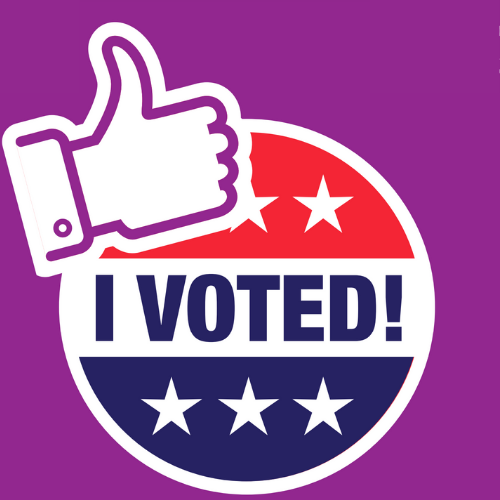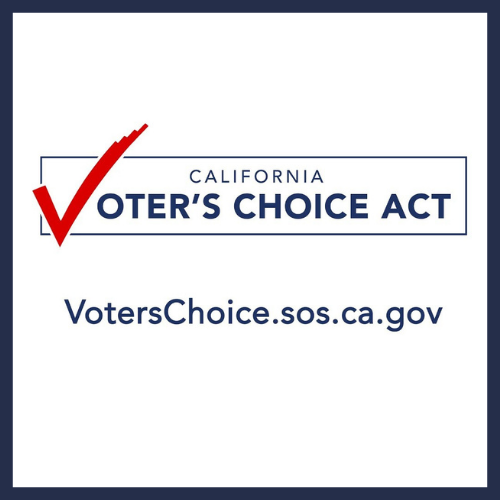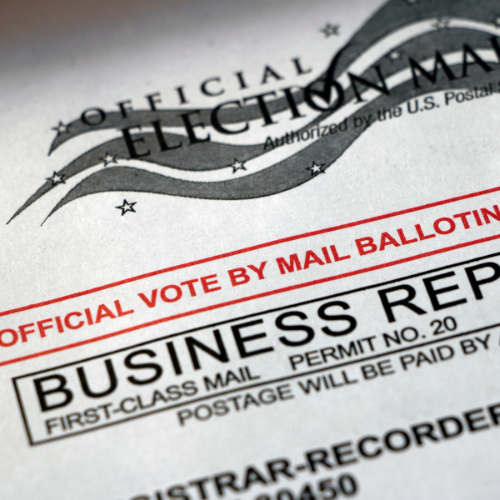Over the last year or so, we have seen municipalities and counties across the country start to use Vote at Home (VAH) modeled elections, with sensational results.
Colorado Voting Experience
Imagine the perfect voting experience. You drop by the polling place on the way to work or school. The line is moving quickly, so it doesn’t take more than a few minutes to get to the check-in desk. Once there, your registration is rapidly verified, and you’re handed a ballt by a friendly face. No one hassles you; no one unfairly questions your eligibility. You step aside to a private booth, fill out the form, and have it easily scanned. You get a receipt — and the cherished “I voted” sticker. The whole transaction takes about five or 10 minutes. Upon leaving the site, you not only experience that frisson that reminds you you’re a part of something bigger — civic pride — but also leave there in time to drop off the kids at school and make it to work on time.
Or maybe you skip the drive altogether and mail in your completed ballot after having received it in the mail. Or you thought about your choices for months but voted and returned your ballot in a matter of minutes on Election Day. In many ways, it’s a day like any other: you carry on with your duties as you otherwise would. In another way, though, it’s a special and unique experience; you participated in an act that for many was hard-fought and hard- won, that is a guaranteed right to you as a citizen, and that helps direct the course of the nation. You voted. And, because of that, you got to be one of the country’s critical decision-makers.
It may not yet be the norm, but in Colorado, and in states with more in-person and at-home voting options that resemble the above processes, a comprehensive elections model ensures an experience that benefits both voter and administrator alike. And it boosts turnout.
Disability and Voter Turnout in the 2018 Elections
Rutger’s University analysis of disability turnout finds four and five star Vote at Home states, like Colorado and Arizona, consistently outperform others in reducing the disability voting gap.
Examining the Voter Choice Act and Vote Center Implementation in California
This study evaluated California’s Voters Choice Act and the effects on turnout and voting methods.
Abstract: “In 2018, California implemented a series of voting reforms under the new Voters Choice Act. Counties were allowed to opt in to the program rather than be required by law. Five counties, Madera, Napa, Nevada, Sacramento and San Mateo, implemented the changes for the 2018 primary and general elections. This paper examines the effects from the adoption of the Voter Choice Act in 2018 in terms of turnout and voting methods, with a focus on the shift toward vote by mail. The goal of this study is to better understand who is voting when and how in the revamped California election environment. Results show that when given multiple convenience options such as vote by mail and vote centers with early voting hours, voters overwhelmingly choose to vote by mail. Results also suggest than when voters change their behavior in a reform environment, the majority move from in person voting to vote by mail rather than vice versa.”
Does Mail Voting Cause Voters to Gather Information About Politics?
This paper finds that voters who obtain their ballots by mail tend to be more informed than voters who vote at polling places because they are given more time to review their ballots and research candidates and issues. As such, voting from home, or voting by mail, results in a more informed electorate.
Mail Voting and Minority Turnout: Evidence from Ohio
This report presents evidence that greater access to mail ballots is associated with greater county-level voter turnout, including in counties with larger Black and Hispanic populations.
Considerations for Adopting Vote at Home in Connecticut
Foreword: “This report was prepared in response to Connecticut Governor Dannel P. Malloy’s Executive Order No. 64 issued in February 2018, directing “an analysis of the potential methods and requirements to implement voting by mail for all local, state and federal elections.” The report was prepared with assistance from the National Vote at Home Institute (NVAHI), a 501(c)(3) organization, at the request of and under the direction of the Office of the Governor and the Office of Policy and Management, and in consultation with the Office of the Secretary of the State.”
Electorate Study: How Did the Voter’s Choice Act Affect Turnout in 2018?
Research Questions: “In its first year of implementation, did the Voter’s Choice Act (VCA) change turnout patterns in the counties – Madera, Napa, Nevada, Sacramento, and San Mateo – that adopted this new reform? How did this reform affect the turnout of groups of Californians – young voters, Latinos, and Asian Americans– who have often participated in elections at lower rates than others? We address these questions by gathering data on turnout rates, voter demographics, and electoral competition from 2002 through the primary and general elections of 2018, comparing trends in the adopting counties to the rest of the state.”







